
Concept explainers
(1)
Interpretation:
The most acidic hydrogens in the given compounds are to be indicated.
Concept introduction:
The substances that produce hydrogen ions (
According to the definition of Bronsted and Lowry, acids are the substances that donate protons whereas bases are the substances that accept protons.
(1)
Answer to Problem 22.60SP
The most acidic hydrogens in the given compounds are shown in Figure 1.
Explanation of Solution
In a molecule, different types of protons are present. However, when acting as acids, only the most acidic proton participates in the acid-base reaction. The protons of
Acidic hydrogen is defined as that hydrogen which is attached to more electronegative atoms like oxygen and fluorine. The compound (f) does not contain any acidic hydrogen atom in the given compounds.
The most acidic hydrogens in the given compounds are shown below.
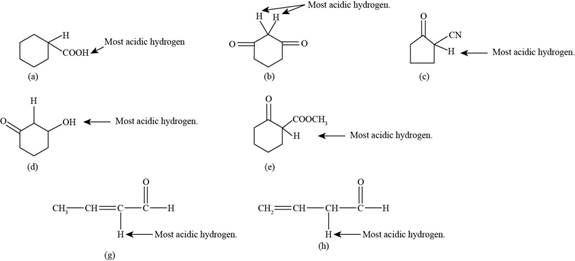
Figure 1
(2)
Interpretation:
The structures of important resonance contributors of the anions of the given compounds are to be drawn.
Concept introduction:
The delocalization of electrons due to presence of lone pair and double bond is called resonating structure. The structure is more stable if the resonating structures are more.
(2)
Answer to Problem 22.60SP
The structures of important resonance contributors of the anions of the given compounds are shown below.
Explanation of Solution
The formation of carbanion occurs when acidic hydrogen is removed from a compound. The important resonance contributors of the anions that results from the removal of most acidic hydrogen are shown below.
(a)
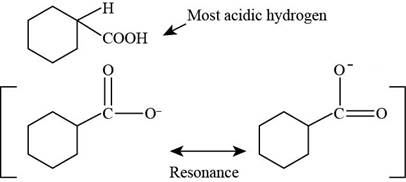
Figure 2
(b)
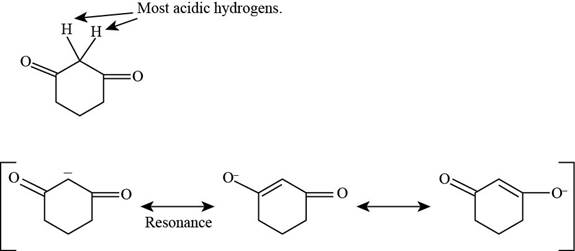
Figure 3
(c)
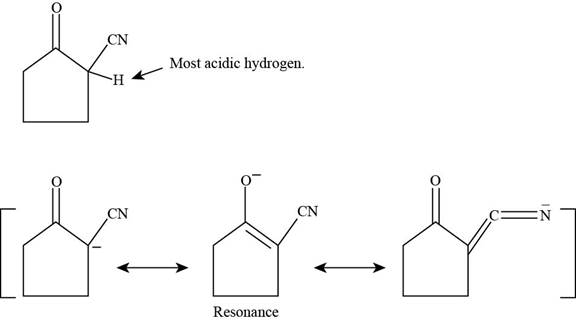
Figure 4
(d)
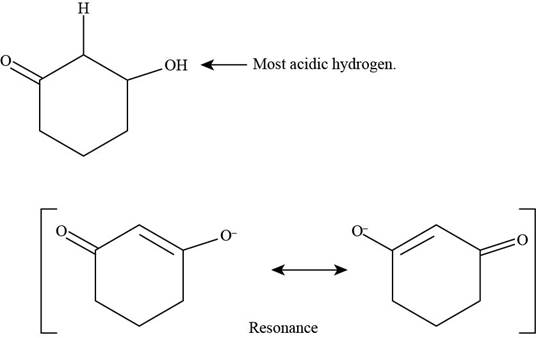
Figure 5
(e)
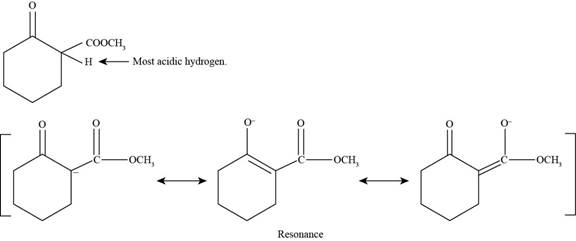
Figure 6
(f)
The given compound is shown below.

Figure 7
The given compound does not contain any acidic hydrogen atom. Therefore, it does not show resonance structures.
(g)
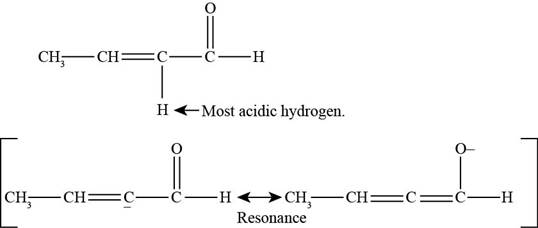
Figure 8
(h)

Figure 9
Want to see more full solutions like this?
Chapter 22 Solutions
EP ORGANIC CHEMISTRY -MOD.MASTERING 18W
- Can I get helpp drawing my arrowsarrow_forwardWhich of the m/z values corresponds to the base peak in the mass spectrum shown? 100 80 A. 45 B. 44 C. 29 D. 15 Intensity 20 0 10 20 30 40 B- m/z -8 50 E. 30 Which of the m/z values correspond to the molecular ion for the compound shown? A. 18 B. 82 OH C. 100 D. 102 E. 103arrow_forwardCan someone help me with drawing my arrows.arrow_forward
- I'm having trouble with converting lewis diagrams into VSEPR diagrams. I currently have this example of C2BrCl3 which I want to turn into a lewis structure, but I'm not sure what steps I need to do in order to do so. I have the table written down, however, there's two central atoms so what would I do? There seems to be 4 electron domains on the carbon atom and no lone pairs so it would seem like this shape would be tetrahedral. Here's what I have now. Thanks!arrow_forwardWe discussed the solid phase resin using in peptide synthesis. Provide a mechanism, for its formation. DRAW THE MECHANISM.arrow_forwardPlease help. Every time I've asked an expert in the past, it's been wrong :(arrow_forward
 Organic Chemistry: A Guided InquiryChemistryISBN:9780618974122Author:Andrei StraumanisPublisher:Cengage Learning
Organic Chemistry: A Guided InquiryChemistryISBN:9780618974122Author:Andrei StraumanisPublisher:Cengage Learning
